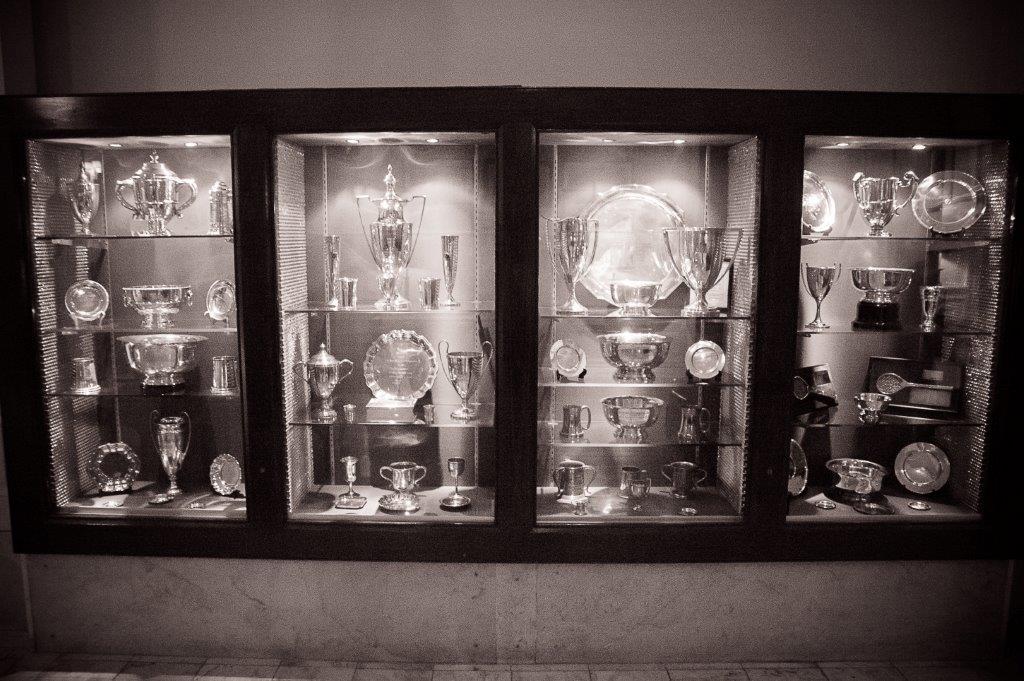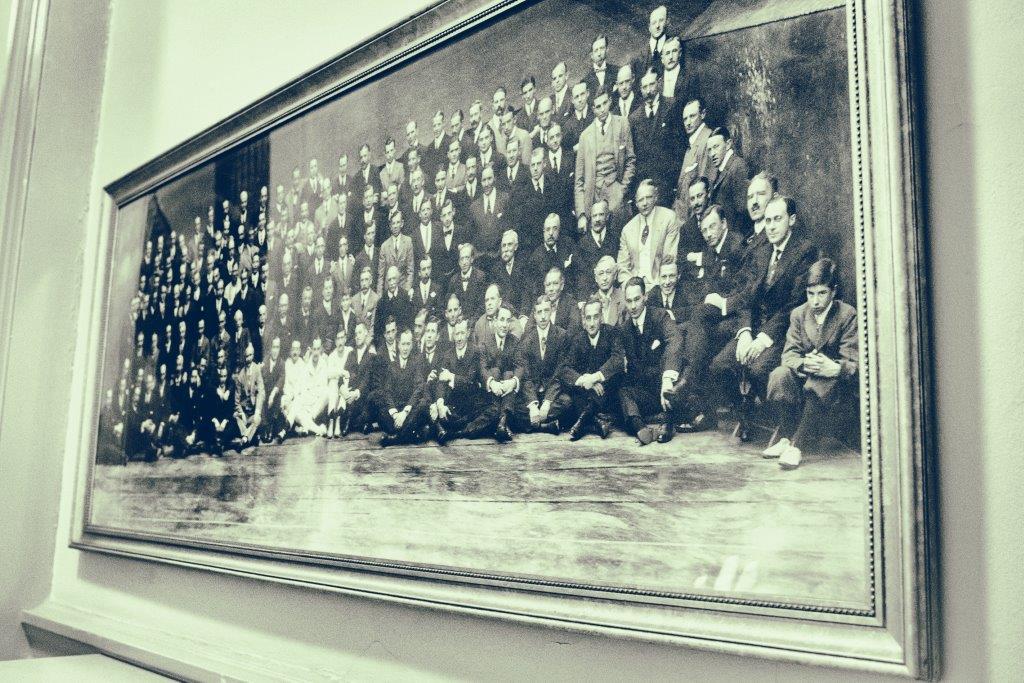The Racquet Club of Philadelphia is home to three unique racquet sports steeped in rich history: Doubles Squash, Court Tennis, and Racquets.
Tennis was the family business for two centuries. His great great grandfather kept the court at Oxford; his great grandfather managed the Windmill Street court in London; his grandfather, Edmund, was world champion from 1862 to 1871 and worked at Leamington, the James Street court in London and then Oxford; and he grew up in Brighton where his father managed a court and manufactured the country’s supply of tennis balls.
Fred Tompkins was a very good tennis player—”Tompkins is a stylist of the old school,” wrote Allison Danzig in 1930, “a pretty player with a beautiful stroke”—but his great skill was in teaching. He apprenticed as a teaching pro at Prince’s Club in London, and then worked at Stratfield Saye, the Dukes of Wellington’s estate in Hampshire as well as at a racquets court in Malta. In 1893 the Racquet & Tennis Club in New York offered Tompkins a job at their new court. Tompkins went to his oldest brother Alfred, who at the time ran a hotel in Notting Hill, to borrow money for the ship’s passage. Instead of lending money, Alfred took the job himself (he had in the 1880s been a pro in Manchester).
In 1904 another American club offered him a position, and this time Fred did not tell his brothers. He came to the Racquet Club of Philadelphia that year as head professional and stayed until 1936 when he retired after thirty-two years as service. He was the coach of Jock Soutar, the RCOP’s assistant pro who was world racquets champion from 1913-27, as well as two generations of champion players at the RCOP including the Pearson and Van Alen families. In 1909 he became the second person to write a
book about squash in the U.S. when Lippincott published his Court Tennis, Racquets & Squash manual.
Tompkins’ greatest legacy came when the RCOP switched clubhouses in 1907. Originally in the new South Sixteenth Street building, there were five squash singles courts, two racquets courts and a court tennis court. On the fourth floor, a bit of unused space twenty-five by forty-five feet was left over. It was too large for another squash singles court and a bit too small and low-ceilinged for another racquets court. Tompkins instead created a brand-new game, squash doubles. He nurtured it for decades and by the time he retired it was a bonafide sport of its own, with the nationals having been started in 1933. Now, more than a century after his fateful decision, there are more than two hundred courts around the world with thousands of passionate practitioners and spectators of Fred Tompkins’ invention.
By James Zug
Many find court tennis to be a fascinating game that challenges the mental and physical powers of the players. When Maj. William C Winfield invented lawn tennis in 1874, its royal ancestor was already centuries old. Today, millions play lawn tennis and only a handful of men and women keep the original game alive.
The action packed sport soon spread to schools, first using school walls, and later with proper four-walled courts being specially constructed for the game. The sport now survives as a full-fledged secondary school sport in England where athletes compete in either Singles or Doubles. Racquets was once popular in America as well; however, many defunct courts have been repurposed to serve other needs. The most famous of these courts served as the location of the first artificial nuclear chain reaction at the University of Chicago’s Stagg Field in 1942. Still maintaining some popularity with the youth in England, its accessibility is limited to only a few private clubs. At its height, Racquets was part of the 1908 Summer Olympic Games, but its lack of exposure to the rest of the world was evident as only British men entered the competition.
Despite its origins as a recreational activity for prisoners, the game played today requires a level of athletic ability and reflex demanded by few other sports. The number of participants may have dwindled since its hey-day, but the core enthusiasts remain devoted to showing the world a game that will stand the test of time. The Racquet Club of Philadelphia encourages players of all levels to take up the game as our racquets court is arguably known to be the best in the world.


